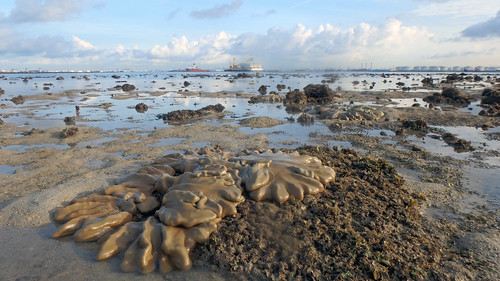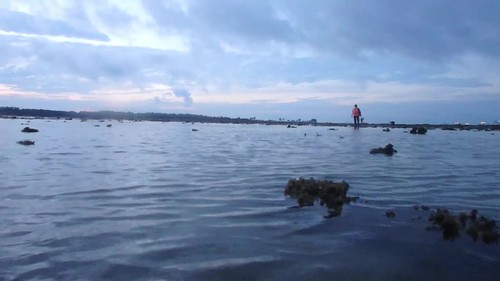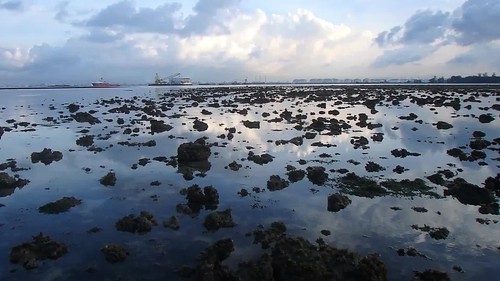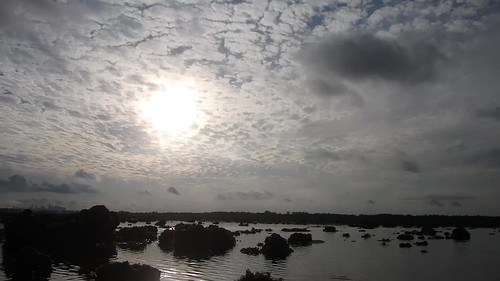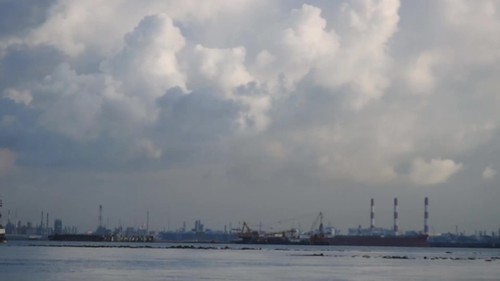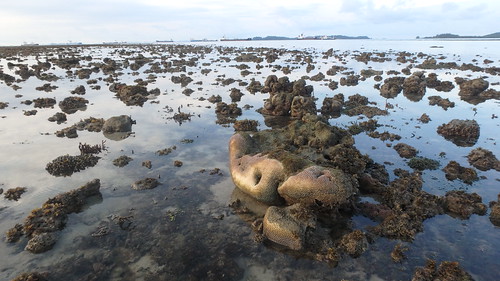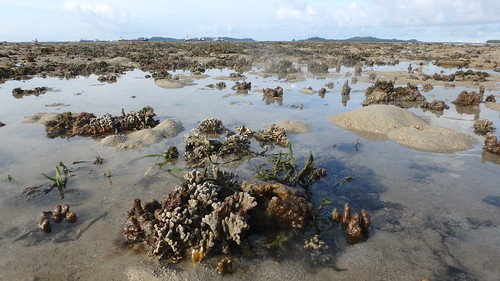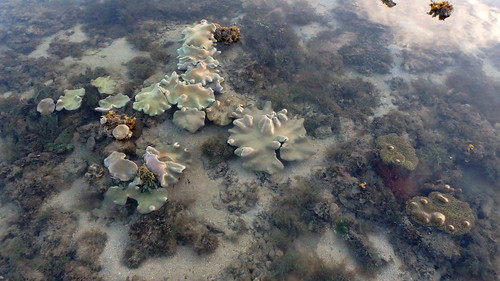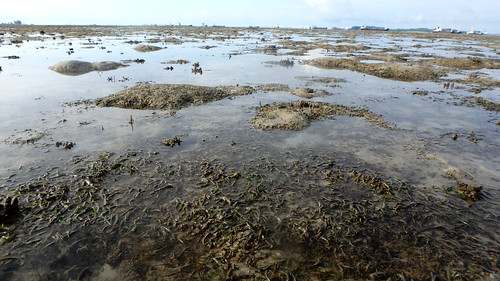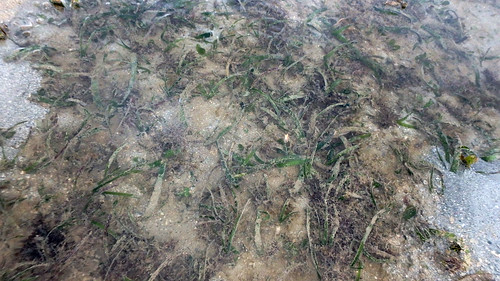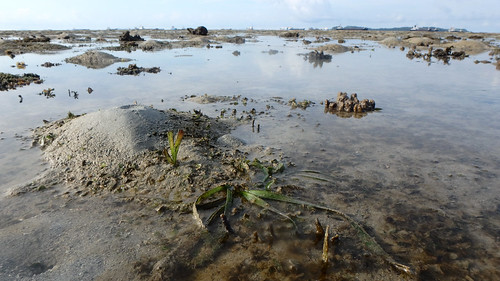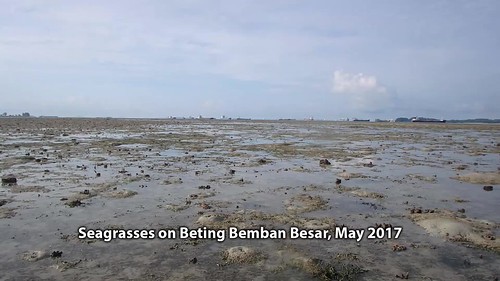In Jun 2016, the survey team estimates about 50% of the hard corals we saw were bleaching, 50% for leathery soft corals and 10% for sea anemones.
 |
| This reef in Jun 2016 during mass coral bleaching. |
We arrived at first light. And I was greeted by this tiny clown anemone fish in a Giant carpet anemone! I saw many Giant carpet anemones and one Frilly sea anemone.
We had to be careful where we stepped as there were many Blue-spotted fantail rays on the shore.
Another intriguing creature that I came across was this very long, very hungry Big synaptid sea cucumber.
The reefs seem rather quiet today. While there were scattered corals of various kinds, much of the reef edge was taken over by seaweeds of various kinds.
Some of the large coral colonies still had bleaching portions.
I saw several Anemone corals and they were ok. But almost all the Small goniopora coral colonies I saw were very pale. I saw a few small Flowery disk corals that were bleaching, but I saw large colonies of other Disk corals that looked alright. I saw one large Brain coral that had dead portions, and another that looked alright.
Some special corals I saw include a small colony of Anchor coral, a small Galaxy coral and one Tongue mushroom coral.
I saw a few Sandpaper corals, most had dead portions. I saw several Cauliflower corals that were alright. I saw small Stumpy acropora coral colonies with dead portions.
The field of Branching montipora corals on the high shore were mostly dead, with about 20% live portions. More living portions towards the low water mark.
Most of the corals I saw were Merulinid corals of various kinds. Some of the smaller colonies looked alright, but many had bleaching or dead portions.
Many of the large Merulinid colonies had dead or bleaching portions. Although some of the Boulder pore corals were alright.
I saw some huge leathery soft corals that were alright. But some were clusters of smaller colonies, possibly a result of a larger colony 'melting' into smaller pieces.
I also saw some with odd colours, and some that were covered with epiphytes. I didn't see any flowery soft corals.
There were sprinkles of seagrasses everywhere. With denser patches in the middle of the reef. But these dense patches were heavily covered in ephiphytes.
I saw Spoon seagrass (small and large leaves), Needle seagrass (broad leaves), Sickle seagrass.
There were some Tape seagrass. Some were cropped, others were long (about 30cm). I sense the seagrasses here were a little better in Jun 2016, less heavily covered in ephiphytes and with more animals seen among them.
Here's a video of the seagrasses today.
This submerged reef lies opposite Pulau Semakau. Alas, we didn't see any Knobbly sea stars though I looked in the same area where we saw them during our last survey in Jun 2015. Russel found a huge fish trap with a large pufferfish in it. He managed to release the fish and destroy the trap.

Photos shared by others on this trip
- Russel Low on facebook.
- Toh Chay Hoon on facebook.
- Dayna Cheah on facebook.
Meanwhile, at the same time, Liz Lim was on nearby Pulau Semakau shore with TeamSeagrass

